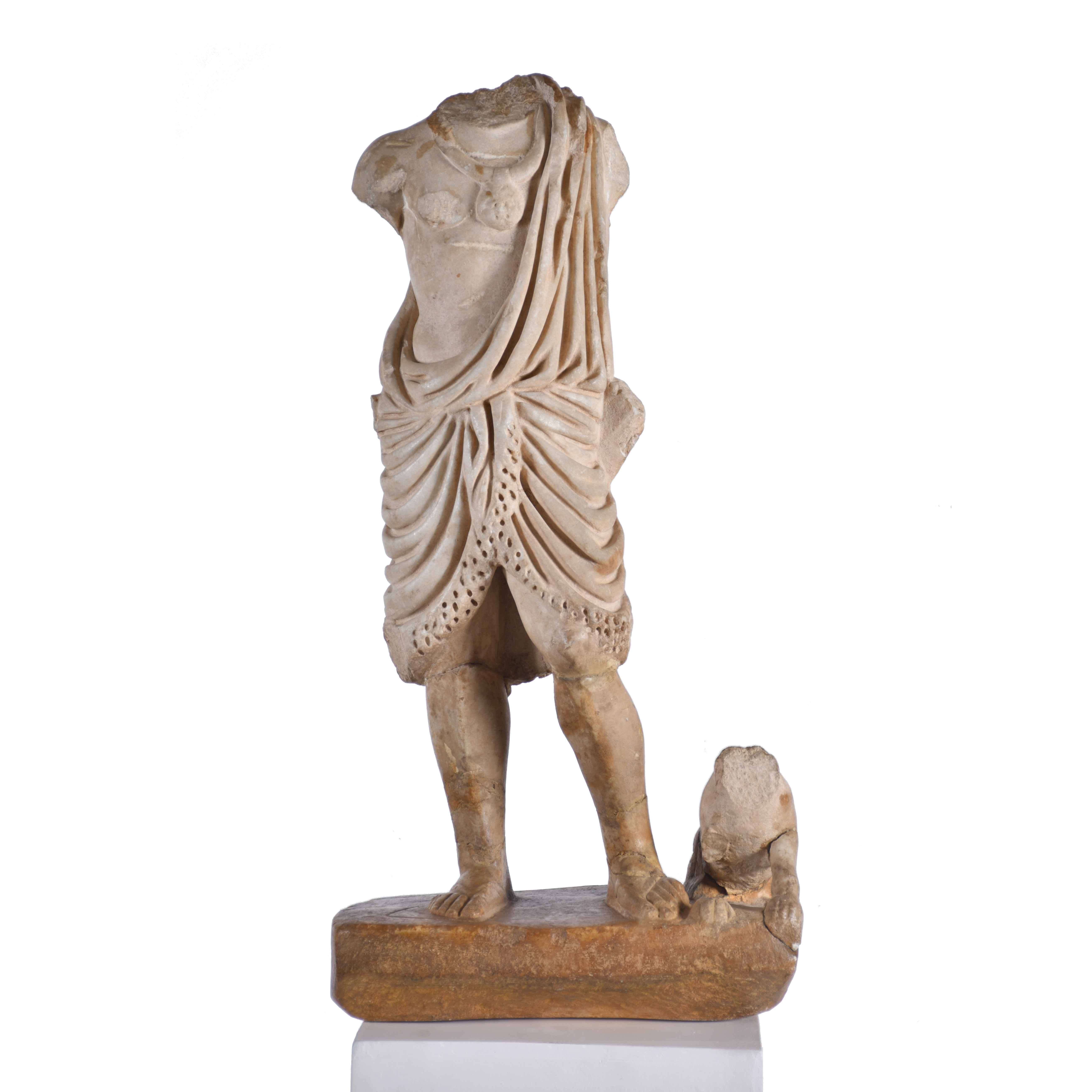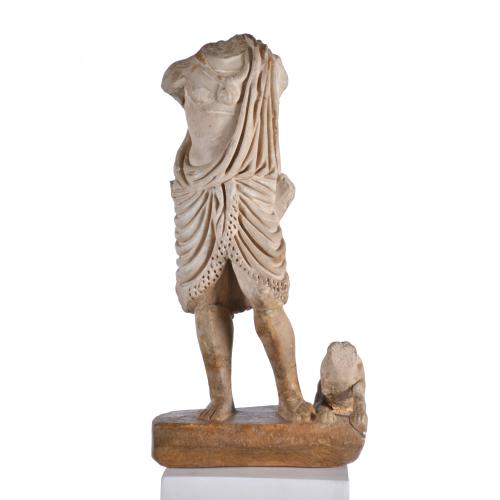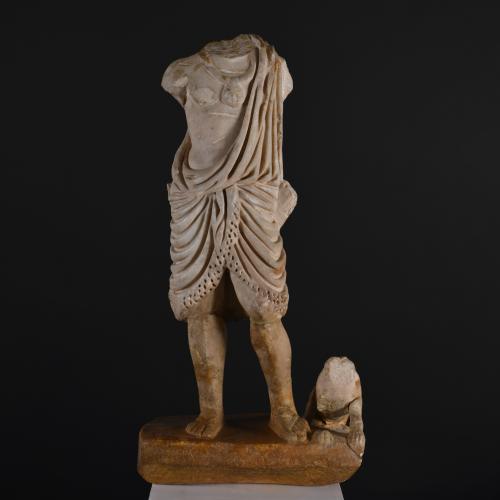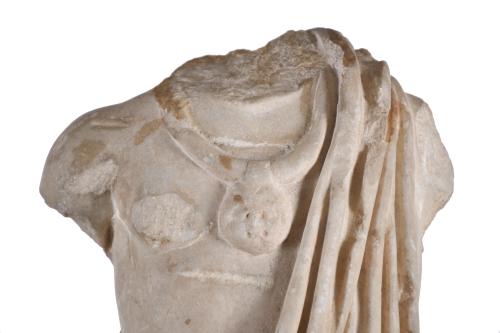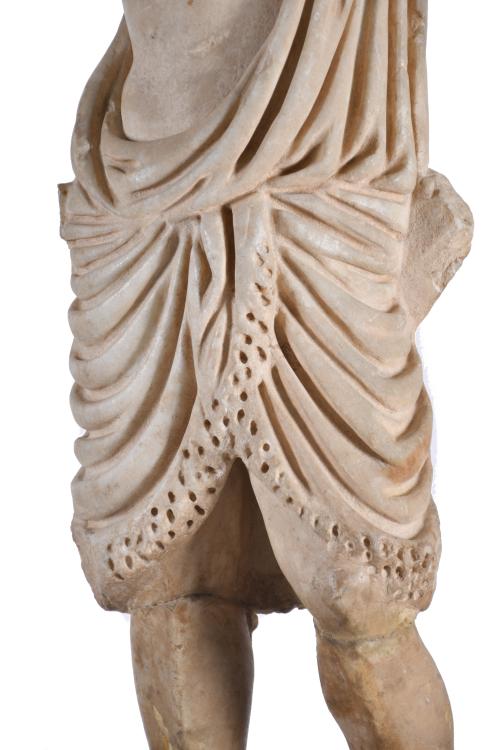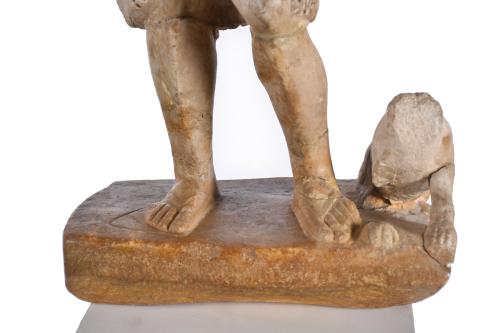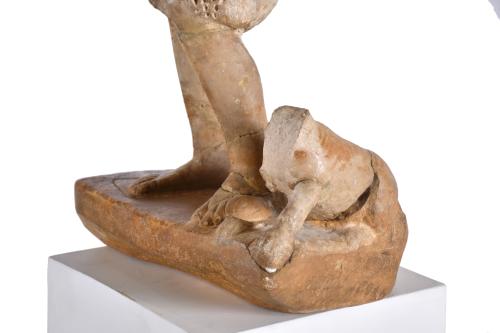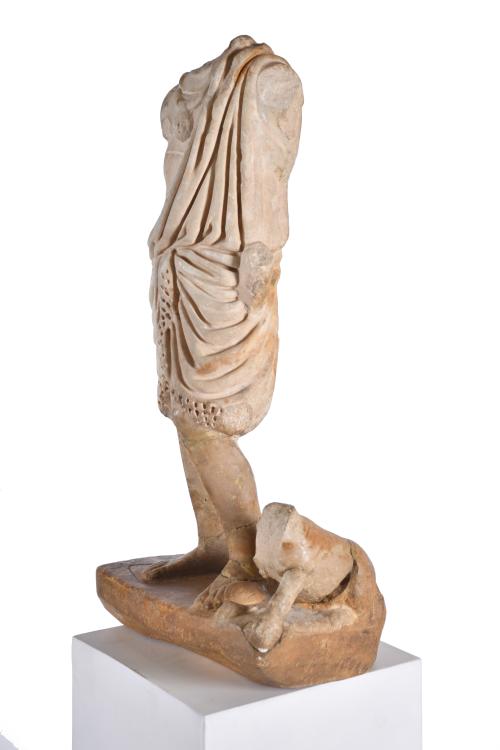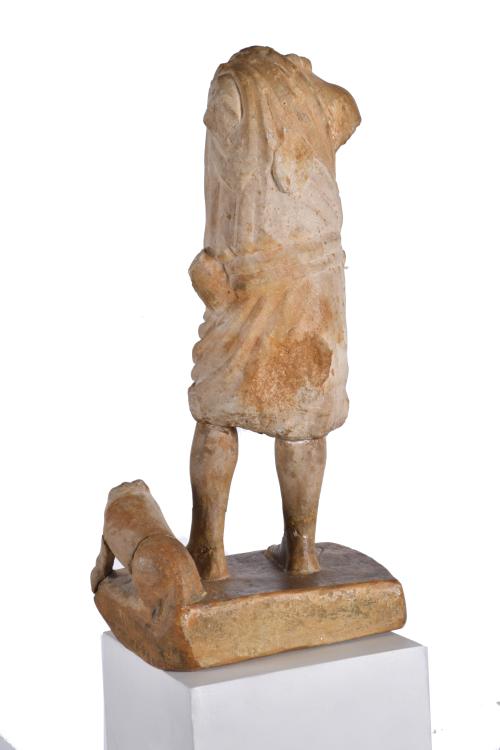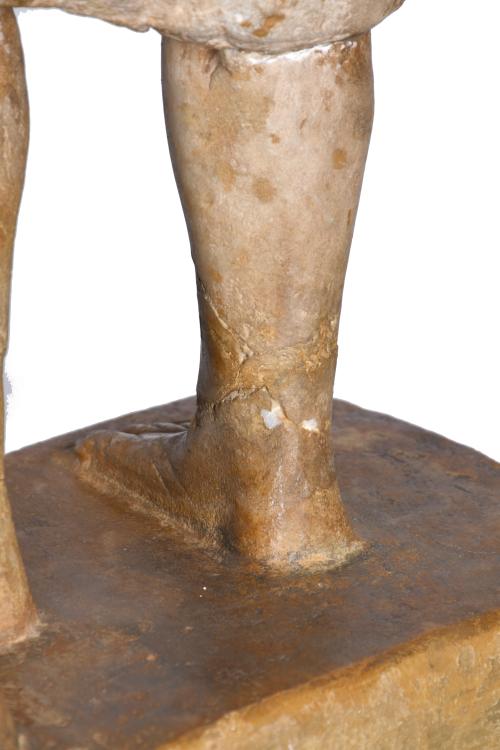560. ‘Meleager’, Rome, 1st-2nd century AD.
Finalized
Start price 50.000€
NOT SOLD
Do you need a shipment?
Contact our logistics department here
Purchase conditions for this lot
The auction price for both auctions and direct sales will increase by 18% for the auction house´s brokerage fees, plus a 21% VAT on the auction house´s commission. The auction price will increase by 21.78%, which includes commission and VAT.
Once the tender is over, you will receive a notification indicating whether you are the winner, with an invoice attached. Payment must be made within 15 calendar days, otherwise the lot will be rescinded.
Do you want to sell a similar piece with us?
If this lot caught your attention because you have a similar one, we encourage you to make a completely free valuation. Click here and an expert will contact you.
Lot description
Round-carved marble.
The image is identified as the Greek hero Meleager. It is inspired by the original bronze by the classical sculptor and architect Scopas, from the 4th century BC, which is housed in Pio-Clemente Museum in Rome. Scopas, along with Praxiteles and Lysippos, were considered the three great sculptors representative of the second period of Classicism.
This sculpture depicts a young hero in contrapposto. Under his feet on the left, there is a dog that seems to be looking towards Meleager.
The young man is wearing a tunic that was used as a cape by Greek cavalry soldiers and ephebes between the 5th and 3rd centuries BC. The garment is complemented by a medallion with a lion's head. The set was probably accompanied by a bow or a spear.
Meleager was the son of Altea and King Calydon and was known as a legendary hunter and powerful warrior. When his father, King Eneo, made an offering to the gods, he forgot the goddess Artemis, who, as punishment, sent a huge boar to destroy the land, crops, livestock and anyone who tried to stop it. Seeing the destruction caused by the animal, Meleager organised an epic hunt in which the great huntress Atalanta took part, and Meleager fell in love with her. Finally, it was Atalanta herself who wounded the animal and Meleager who killed it, offering her the boar's skin as a reward. Meleager's uncles did not accept that Atalanta should receive the prize, and this situation led to a major conflict that ended in a confrontation between the two villages and the death of Meleager.
Restorations: The piece rests on a marble resin base that was added later.
Provenance: Acquired in 1987 from the antique dealer Ramon Barrubès. It was probably sold at Sotheby's in the 1980's.
It includes is a certificate and market valuation issued by Javier Palomo Ferrer of Ababol Gestió del Patrimoni Cultural, based on documentation and information available at J. Bagot i F. Cervera Gallery. 73 x 37 x 22 cm.
Recomended lots
Confirm your maximum bid
You are bidding for €
- Tax not included
Confirm your maximum bid
You are bidding for €
subarna-app.lot.recuerde_comision
- Tax not included
Loading…
Conecting
Are you sure you want to buy the lot?

